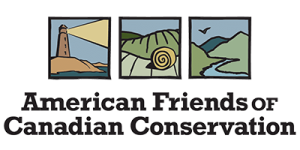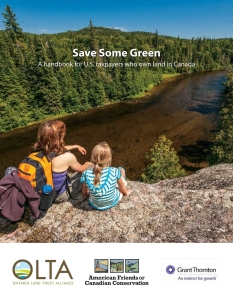Fiddles and bagpipes call people from around the world to the town of Mabou, on Cape Breton Island, at the northern end of Nova Scotia. They are the sounds of the Ceilidh tradition, celebrating Celtic culture brought by 19th-century immigrants. The Gaelic word translates to “Gathering of People.”
In 2019, a Gathering of People celebrated the protection of 2000 acres on the wild coast of the Mabou Highlands and a new tradition of conservation, let by 20th-century settlers from the United States, and the Nova Scotia Nature Trust.
In the 1940s Americans began coming to the area, drawn by its natural, cultural, and historic character. Carmelita Hinton, the founder of the Putney School in Vermont, extolled the beauty of the bluffs overlooking Northumberland Strait.
David Rumsey first visited Mabou in the summer of 1964, to help his college roommate, Jonathan Hall, build a cabin. Jonathan’s connection to Cape Breton was through Jim St. Clair, a Bostonian whose mother grew up on a farm nearby. They met when Jim was teaching at Jonathan’s high school in Connecticut. That trip produced a solid building and a passion for place that has been the background music in David’s life ever since.
Jim St. Clair threw open the door to his Cape Breton geographic home and welcomed David to explore it with him. “Jim taught me about the area by showing me the old census data and mapping cellar holes together. That gave me a real sense of the history of the place. It is haunting. At one time twelve families lived out there. The McKinnons, McArthurs, MacDonalds.”
The Scottish settlers had moved inland by the time the Americans found the Mabou area. Over time, the Treats, Walworths, Learnards, and Kinzers along with David and Jonathan, and Carmelita’s children formed a new seasonal community. Jean Rosner, one of Carmelita’s daughters, inherited her mother’s passion for the Highlands. She recruited David, by then a successful California real estate developer, to help protect them.
“Jean was a strong, forward-looking, dedicated conservationist” says David. “She educated me about a vision for the Mabou area. She really got me thinking long-term.”
But they were a Ceilidh of Americans, passionate about preserving a rural part of Canada that needed economic opportunities. With the vision to lure more people to this enchanting landscape, another American, Ian Sherman, who had moved to Cape Breton in the 1970s, designed a trail system, based on old cart roads. Today, visitors seeking solitude, ocean views and the sound of the wind can hike 25 kilometers of paths, known as the Cape Mabou Highlands Hiking Trails which roam through the collapsing stone foundations of abandoned homesteads in the rugged headlands, dotted with signposts featuring Gaelic names.
The Nova Scotia Nature Trust made it possible for hikers to revel in the wildness of the area – permanently. The organization was still young in 1999 when Bonnie Sutherland, the Executive Director, met with David and Jean. He remembers it was a rainy day in the Highlands, a “great conversation” and the “beginning of a long project.” During the decades that followed, the Treats and Walworths made pioneering conservation easement gifts to the Nature Trust, Jean passed away, and her vision of protecting the Mabou Highlands advanced in “fits and starts.”
American Friends of Canadian Conservation also was launched and matured alongside the effort to protect Mabou Highlands. Shortly after American Friends was recognized by the Canadian government as a prescribed done, Bob and LeeAnne Kinzer donated a conservation easement to permanently protect their 215 acres, in a transaction facilitated by the Nature Trust.
But some of the largest parcels remained unprotected. About two years ago, David decided to work in service of the big vision. He approached the Nature Trust with a proposal. “I said I would put up half the money and I volunteered to put the deals together. Because I had ‘skin in the game’ I was able to work with the American landowners who controlled 1000 acres that were absolutely key.” David and his wife Abby pledged to make a $600,000 tax deductible donation to American Friends to support the Mabou Highlands Initiative. Grants from the Canadian federal government and a provincial granting organization matched the Rumseys’ underwriting. Suddenly, the people, the resources and the deals were all in harmony.
Last summer, when Canadians and Americans gathered to sing the praises of the now-protected Highlands, Bonnie Sutherland said, “We are celebrating the protection of an incredible natural legacy for future generations, realizing the long-held vision of protecting the spectacular Mabou Highlands, in perpetuity. This achievement was possible thanks to the determination and passion of landowners and community leaders like David and Jean, and the unique cross-border collaboration of American Friends and the Nature Trust.” She added that in addition to funding from government, foundation partners, and many individuals and families, success also relied on supportive community members, and the volunteers to ensure the coastal wilderness and trails are lovingly cared for.
Since the celebration, the Province of Nova Scotia set aside 3600 acres of adjacent provincially owned land as the Cape Mabou Wilderness Area, adjoining the properties protected by the Nature Trust and the many friends of the region. The cheering of celebration is music to David’s ears, and hopefully reaches Jean and Carmelita.




